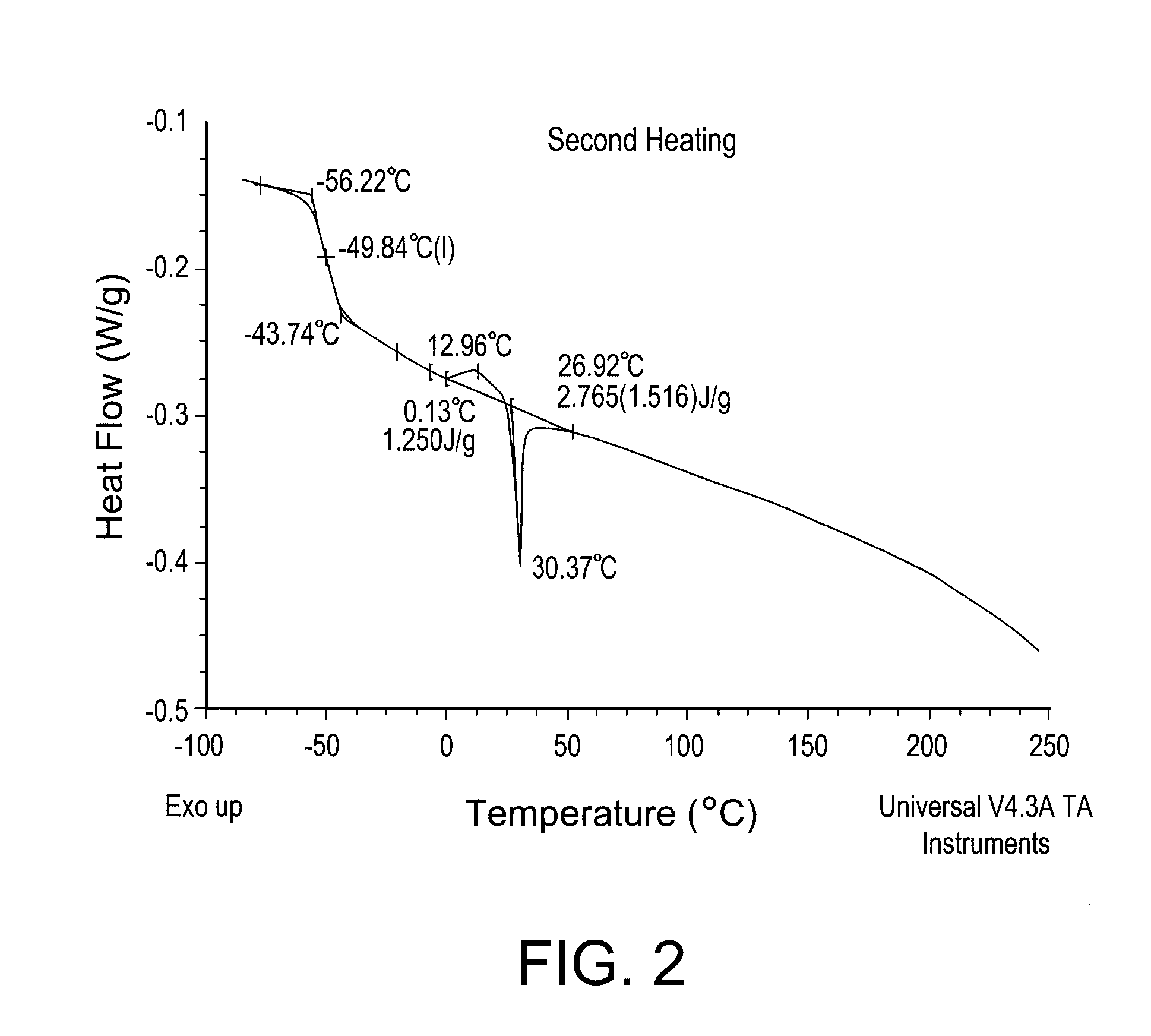Solvent Free Aqueous Polyurethane Dispersions and Methods of Making and Using the Same
- Summary
- Abstract
- Description
- Claims
- Application Information
AI Technical Summary
Benefits of technology
Problems solved by technology
Method used
Image
Examples
example 1
componentabbreviationgramsdiisocyanteDes W162.51PolyolPRO1000220.93Ionic componentDMPA16.62Chain terminating agentMPEG55074.95Neutralizing agentTEtOHA7.78Chain extending agentHMDA12.26D.I. waterwater359.36
A 1 L 3-neck round-bottomed flask equipped with a mechanical stirrer and nitrogen inlet was charged with diisocyanate Des W, the difunctional polyol PPO1000, ionic component DMPA, and chain terminating agent MPEG550 at room temperature. The contents of the reactor were stirred at 200 rpm and the material was heated to 95° C. for approximately 3 hours. A sample was taken out to measure the free isocyanate groups (NCO content) in the reactor to ensure complete reaction of hydroxyl groups with isocyanate groups. Once the NCO value reached theoretical value, the contents of the reactor were then cooled to 85° C.
To a 1 L jacketed glass reactor equipped with an external heating bath and a pitch blade impeller was added D.I. water and neutralizing agent TEtOHA. 200 grams of the prepolymer...
example 2
The same as Example 1, except 5.28 g of TEA was used as neutralizing agent instead of TEtOHA.
example 3
375 grams of prepolymer prepared and 325 grams of the prepolymer were dispersed in water based on the same raw material ratio as Example 1. The procedure was the same as Example 1 except MPEG 550 was added after the rest of the reagents of prepolymer were reacted for 2 hours at 95° C.
PUM
| Property | Measurement | Unit |
|---|---|---|
| Length | aaaaa | aaaaa |
| Percent by mass | aaaaa | aaaaa |
| Percent by mass | aaaaa | aaaaa |
Abstract
Description
Claims
Application Information
 Login to View More
Login to View More - R&D
- Intellectual Property
- Life Sciences
- Materials
- Tech Scout
- Unparalleled Data Quality
- Higher Quality Content
- 60% Fewer Hallucinations
Browse by: Latest US Patents, China's latest patents, Technical Efficacy Thesaurus, Application Domain, Technology Topic, Popular Technical Reports.
© 2025 PatSnap. All rights reserved.Legal|Privacy policy|Modern Slavery Act Transparency Statement|Sitemap|About US| Contact US: help@patsnap.com



